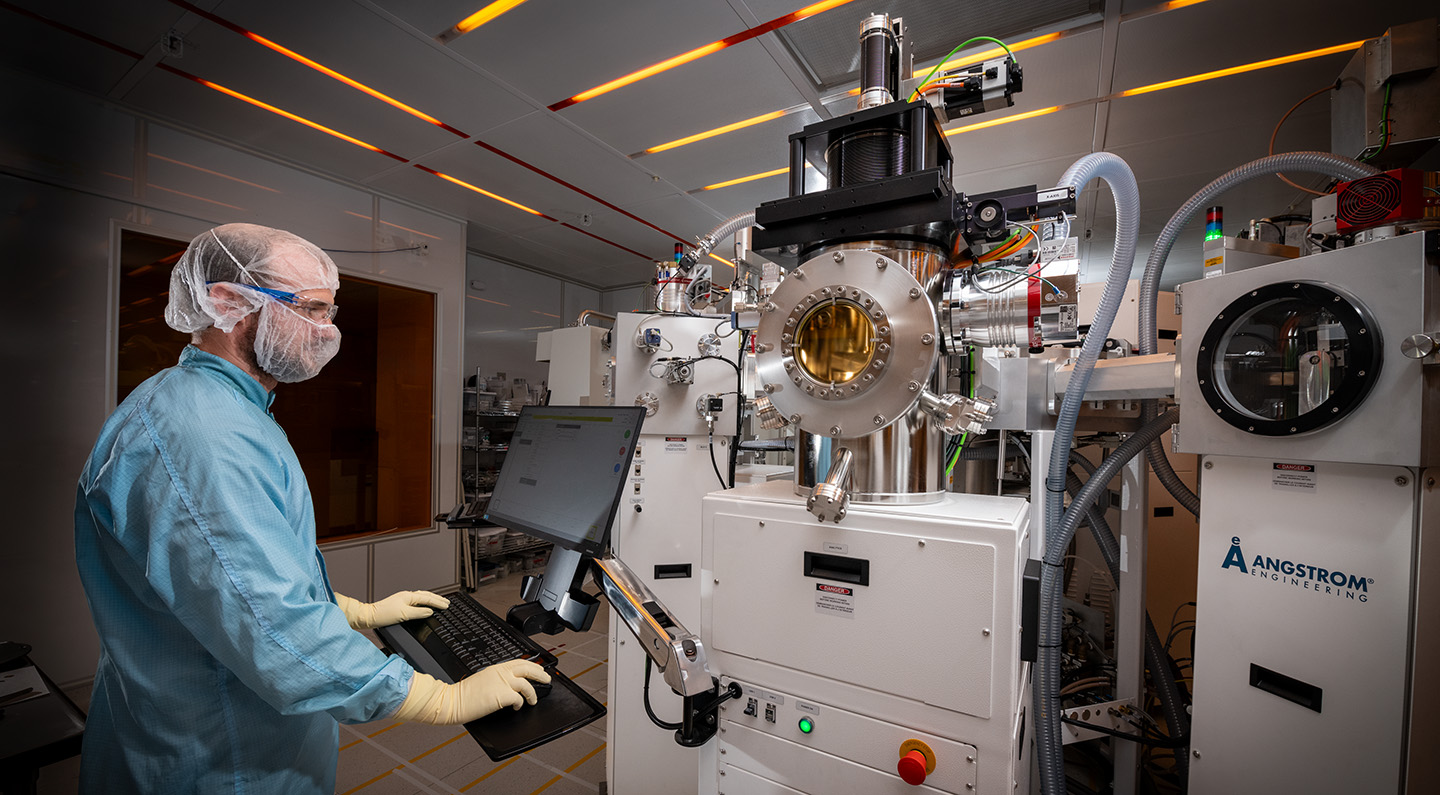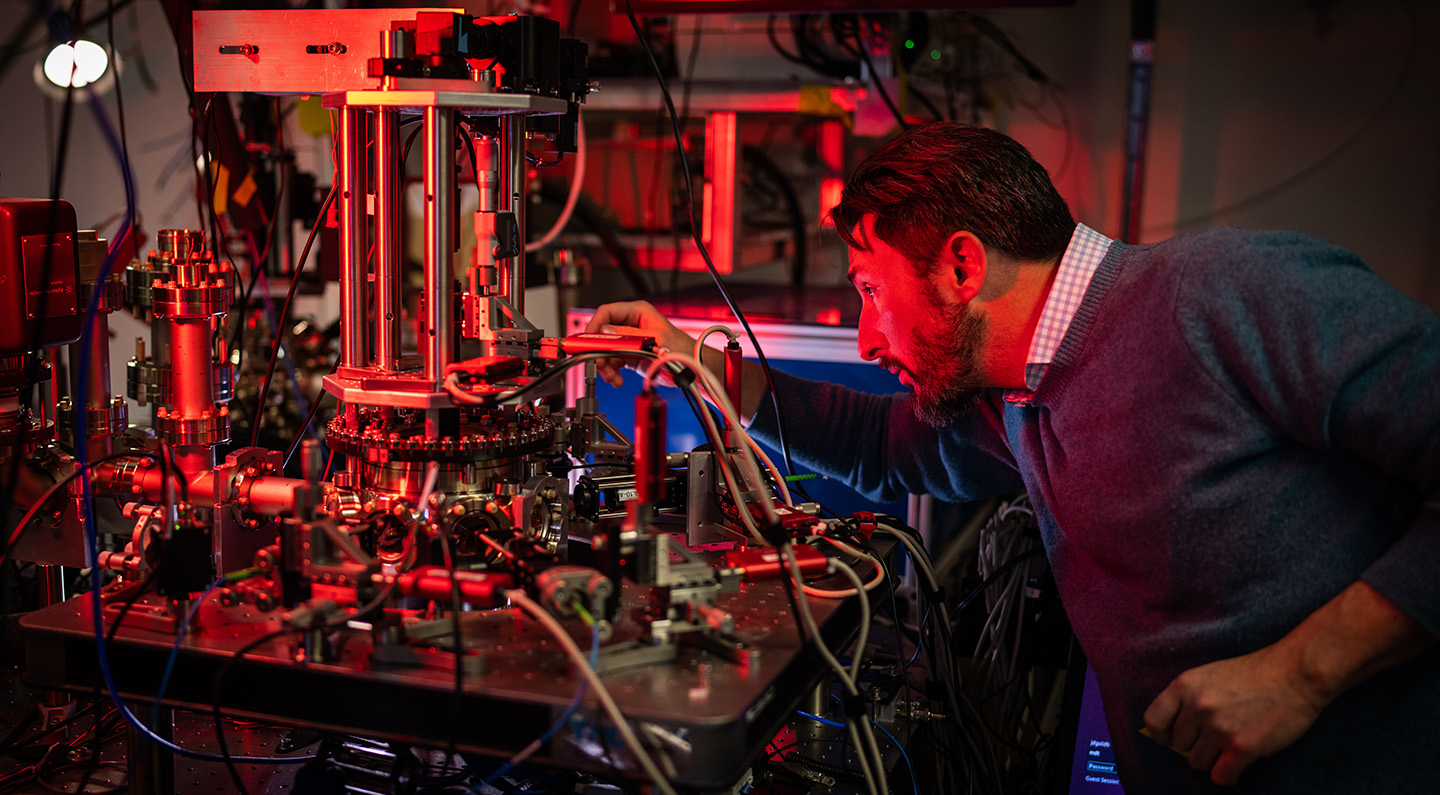The Department of Energy (DOE) has renewed funding for the Quantum Systems Accelerator (QSA), a DOE National Quantum Information Science Research Center led by Lawrence Berkeley National Laboratory (Berkeley Lab) in partnership with Sandia National Laboratories. QSA builds and demonstrates quantum technologies and computing prototypes to transform quantum information science into breakthroughs for society. These advances will enable scientists to use quantum computers to design new materials, discover new chemicals and reactions, and accelerate breakthroughs in energy, physics, biology, and chemistry.
The total planned funding for QSA is $125 million over five years, with $25 million in year one and out-year funding contingent on congressional appropriations.
QSA is one of five National Quantum Information Science (QIS) Research Centers established by DOE in 2020 to expand the frontier of what's possible in quantum computing, communication, sensing, and materials in ways that will advance basic science for energy, security, communication, and logistics. Together, the centers have strengthened the national quantum information science ecosystem, achieving scientific and technological breakthroughs as well as training the next-generation quantum workforce. DOE has renewed funding for all five centers.
QSA brings together 15 partner institutions in North America to drive quantum technology forward. The center combines world-leading expertise and capabilities across national labs, academia, and industry. QSA will also partner with industry, such as Nobel Prize winner John Martinis' Qolab, to advance quantum technology for DOE and commercial applications. These public-private partnerships will ensure that QSA's science and technology advances are industry-relevant at every stage.
Among QSA's many achievements in its first five years, the center made world-leading advancements on three promising qubit technologies: trapped ions, neutral atoms, and superconducting circuits. These achievements are laying the foundation for building practical quantum systems that can tackle real-world scientific and energy challenges and have strengthened QSA's role in keeping the U.S. at the forefront of transformative quantum technologies.

"QSA plays a vital role in advancing QIS across the U.S. by bridging the gap between national labs, academia, and industry. By fostering collaboration, QSA ensures that breakthroughs can move from experimental stages to practical applications, benefiting the nation," said QSA Director and Berkeley Lab scientist Bert de Jong.
"Quantum information science and technology promises to deliver transformative solutions for the nation's most critical scientific and energy challenges. QSA will help realize this future by co-designing the algorithms, devices, and engineering innovations that will make quantum solutions possible," said Carol Burns, Deputy Lab Director for Research at Berkeley Lab.
"We stand at a pivotal moment in our pursuit of quantum utility. By developing next-generation quantum computing prototypes and scalable technologies, we are not only pushing the boundaries of quantum science; we are transforming these advancements into practical solutions for critical applications that will shape our future. Together, we are empowering American innovation," said Sandia National Laboratories' Christopher DeRose and QSA deputy director.

Next up: Improve performance a thousand fold, and more
Over the next five years, QSA's research will focus on two big goals: building working prototype quantum devices that can solve scientific challenges beyond the reach of conventional computers, and - in close partnership with industry - developing technologies that make quantum systems reliable and scalable for everyday use. With an ambitious target of achieving 1,000-fold performance gains in quantum computational power by 2030, QSA is co-designing scalable systems and benchmarking methods to push the boundaries of what quantum computers can achieve. To get there, they're scaling up the number of usable qubits and significantly improving their reliability.
For neutral atom systems, QSA scientists aim to build machines holding more atoms that, when combined with error correction, can run 1,000 times more complex calculations with high fidelity than current systems. For trapped ions, they're developing new ways to encode information that can handle 100 times more data. And for superconducting circuits, they're improving control systems and reducing the number of qubits needed for error correction to achieve a 1,000-fold gain in computational power. Across all platforms, QSA is also creating new benchmarking approaches to properly validate the performance of quantum computers, advance error correction, and build smarter algorithms to fully take advantage of these hardware breakthroughs.
Building on five years of QSA achievements
Since launching in 2020, QSA has enabled major advances in quantum information science, including record-setting sensors, smarter algorithms, and more. QSA achieved a major milestone by being the first to develop and operate atom-based quantum simulators with over 200 qubits, while also advancing superconducting processors and trapped-ion technologies. QSA researchers also built quantum devices so precise they can detect tiny changes in Earth's gravity, and created quantum error-correcting techniques that bring scientists closer to fault-tolerant quantum computers.

QSA's initiatives have led to over a dozen patents, numerous scientific publications, and the creation of startups that are bringing quantum technology to the market. Multiple quantum companies have benefited from QSA's extensive research network and ongoing collaborations, utilizing the expertise, feedback, and techniques shared by QSA partners to enhance their processes. Additionally, five QSA principal investigators have co-founded quantum companies, applying research results to promising industry use cases.
QSA has also trained a new generation of scientists and engineers, many of whom are now leading quantum research at top companies and universities, alongside high school students and teachers. In addition to the 150 graduate students and 100 postdoctoral students delivering cutting edge research in QSA annually, QSA's QCaMP program has introduced quantum to over 160 high school teachers and 3,200 students across the country. Building on this success, QSA will help create a quantum-ready workforce with new pathways and partnerships that engage undergraduates in community colleges via hands-on training programs.
To learn more about QSA's many achievements, this article highlights five ways QSA has advanced quantum computing. And this Q&A with de Jong showcases QSA's progress, exciting plans for the future, and the kinds of breakthroughs to expect as quantum systems grow and mature.
Leveraging QSA's expertise and capabilities
QSA develops next-generation quantum capabilities by integrating multidisciplinary teams across its partner institutions and leveraging specialized quantum-ready facilities at Berkeley Lab, Sandia National Laboratories, and other leading institutions.
Berkeley Lab, for example, partners with industry and academia and works across the quantum research ecosystem - from theory to application - to fabricate and test quantum-based devices, develop software and algorithms, and build prototype computers and networks. Berkeley Lab's national user facilities provide state-of-the-art resources for scientists in QSA and beyond to advance the frontiers of quantum science. This includes the Advanced Light Source, the National Energy Research Scientific Computing Center (NERSC), and the Molecular Foundry, which has a QIS cluster tool that enables researchers to experiment with dozens of materials and methods for making qubit components in a single automated system. The Molecular Foundry will also soon add a dilution refrigerator that will enable high-throughput analysis of qubits. Berkeley Lab also leads the Advanced Quantum Testbed (AQT), a collaborative research laboratory and open-access testbed to advance quantum computing based on superconducting circuits. In this video, de Jong, shares how quantum research at Berkeley Lab is forging the future of quantum breakthroughs by collaborating with researchers across institutions.






